Tom Clancy - Locked On
Здесь есть возможность читать онлайн «Tom Clancy - Locked On» весь текст электронной книги совершенно бесплатно (целиком полную версию без сокращений). В некоторых случаях можно слушать аудио, скачать через торрент в формате fb2 и присутствует краткое содержание. Год выпуска: 2011, ISBN: 2011, Жанр: Триллер, на английском языке. Описание произведения, (предисловие) а так же отзывы посетителей доступны на портале библиотеки ЛибКат.
- Название:Locked On
- Автор:
- Жанр:
- Год:2011
- ISBN:9781101566466
- Рейтинг книги:3 / 5. Голосов: 1
-
Избранное:Добавить в избранное
- Отзывы:
-
Ваша оценка:
- 60
- 1
- 2
- 3
- 4
- 5
Locked On: краткое содержание, описание и аннотация
Предлагаем к чтению аннотацию, описание, краткое содержание или предисловие (зависит от того, что написал сам автор книги «Locked On»). Если вы не нашли необходимую информацию о книге — напишите в комментариях, мы постараемся отыскать её.
Locked On — читать онлайн бесплатно полную книгу (весь текст) целиком
Ниже представлен текст книги, разбитый по страницам. Система сохранения места последней прочитанной страницы, позволяет с удобством читать онлайн бесплатно книгу «Locked On», без необходимости каждый раз заново искать на чём Вы остановились. Поставьте закладку, и сможете в любой момент перейти на страницу, на которой закончили чтение.
Интервал:
Закладка:
India was the target. D-Day was now.
Attacks began within hours. Along the border between the countries, deep in the Indian interior, even Indian embassies and consulates in Bangladesh and other countries were attacked.
To those asking “Why now?” the answers varied. Many in the world press blamed President-elect Jack Ryan for his verbal attacks on the weak Pakistani government, but those in the know could tell the coordination necessary for these actions meant the plans had been in place for some time, long before Ryan promised he would back India if Pakistan did not end its support for terrorism.
Most people also knew that there was no reason to ask “Why now?” because although the scale of the conflict had increased in the past month, the conflict itself had been going on for decades.
The operation that Riaz Rehan had put into action in the past months, beginning with the attack on the Electronics City tollway in Bangalore, had come to him in a dream many years before, in May of 1999. At that time, India and Pakistan were in the midst of a brief border skirmish that became known as the Kargil War. Pakistani forces crossed the Line of Control between the two nations, small battles raged, and artillery shells crashed down inside the borders of both countries.
Rehan was there on the border at the time, organizing militant groups in Kashmir. He had heard a rumor, later proven true, that Pakistan had begun readying some of its nuclear arsenal. The Pakistanis had possessed nuclear weapons for more than a decade by this point, although their first test of an atomic weapon had just taken place the year before. They had nearly one hundred warheads and air-to-ground bombs, all kept disassembled but ready for quick assembly and deployment in case of national emergency.
That night, sleeping in a mountain redoubt straddling the Line of Control, Rehan dreamt nuclear weapons were brought to his hut by a large saker falcon. The saker ordered Rehan to detonate warheads on both sides of the border in order to create an all-out nuclear war between the two nations. He set off the weapons along the border, the war escalated to the cities, and out of the ashes of the radioactive fires Rehan himself emerged as caliph, the leader of the new caliphate of Pakistan.
Since the night of the dream, he had thought of the falcon and the caliphate each and every day. He did not see his dream as the ruminations of a manipulative mind pulling data out of the real world and spinning it subconsciously into fantasy. No, he saw his dream as a message from Allah — operational orders, just like he would obtain directives from his ISI handlers, and just like he would relay his orders on to the cells under his control.
Now, thirteen years later, he was ready to put his plan into practice. Operation Saker he called it, in honor of the falcon who came to him in the dream.
Over time he had seen it become necessary to change the operation somewhat. He realized India, with many, many more nuclear devices than Pakistan and better delivery capabilities, would destroy Pakistan if a true nuclear war broke out. Plus, Rehan realized, India was not preventing Pakistan from becoming a true theocracy. No, Pakistan itself was the impediment — or more precisely, the Pakistani secularists.
So he decided instead to use the theft of nuclear devices to topple the weak civilian leadership of his country. The citizenry would accept military rule, they had done so many times before, but not if it turned out the ISI or the PDF had stolen the nukes themselves to effect the change in leadership. So Rehan devised a plan to hand off the nukes to some Islamic militant group outside Pakistan, to throw off the scent that the entire operation was an inside job.
Once the government fell Rehan would take control and he would purge the military of secularists, and he would unleash his force of militant groups on secularists within the citizenry.
And Rehan would become caliph. Who better than he, after all? He had become, through years of following the orders of others, a one-man conduit between all the Islamic organizations fighting on behalf of the Islamists in the military. Without Rehan, the ISI could not control Lashkar-e-Taiba, they would not eashhave the support of Al-Qaeda that they enjoyed, they would not have the other twenty or so groups doing their bidding, and they certainly would not possess the money and support that they received from Rehan’s personal benefactors in the Gulf States.
General Rehan was not known in his country at large, he was very much the opposite of a household name, but his return to the PDF and his ascension to department director in the ISI had given him the status he needed to lead a coup against the secular government in charge when the time was right. He would have the support of the Islamists in the Army, because Rehan had the support of the twenty-four largest mujahideen groups in the country. The ISI’s success depended on this large uncoordinated but quite powerful proxy force, and the ISI/PDF leadership had created in their man Rehan something of a necessary link between themselves and their crucial civilian army.
Rehan was no longer just the cutout. Rehan had, by his work, his intelligence, and his guile, made himself a secret king, and Operation Saker was his route to his throne.
63
Domingo Chavez, Dominic Caruso, and Jack Ryan Jr. stepped out of the AS332 Super Puma helicopter and into a freezing cold predawn. Though none of the three men had a clue just where they were as far as a point on a map, they all knew from conversations over the satellite phone with Major al Darkur that they were being transported to an off-limits military base in Khyber Agency run by the Pakistani Defense Force’s Special Service Group. In fact they were in Cherat, some thirty-five miles from Peshawar, in a compound resting at 4,500 feet.
This commando camp would be the staging ground for the SSG hit into North Waziristan.
The American men were led by stone-faced hardened soldiers to a shack near a parade ground on a flat stretch of dirt surrounded by lush hills. Here they were offered hot tea and shown racks of gear, woodland-camouflage uniforms in brown and black over green, and black combat boots.
The men changed out of their civilian dress. Ryan had not worn a uniform since high school baseball; it felt strange and somewhat disingenuous to dress like a soldier.
The Americans were not given the maroon berets worn by the rest of the SSG men in the compound, but otherwise their dress looked identical to the others in the camp.
When all three men were decked out in the same kit, another helicopter landed on the helipad. Soon Major al Darkur, himself dressed in identical combat fatigues, stepped into the shack. The men all shook hands.
The major said, “We have all day to go over the mission. We will attack tonight.” The Americans nodded as one.
“Is there anything at all that you need?” Chavez answered for the group: “We’re going to need some guns.” The major smiled grimly. “Yes, I believe you will.”
At eight a.m. the three Campus operatives stood on the base’s rifle range, test-firing their weapons. Dom and Jack were outfitted with the Fabrique Nationale P-90 automatic rifle, a space-age-looking weapon that was excellent for close-quarters combat due to a bull-pup design, which shortened the length of the barrel that extended past the body of the user. This helped an operator move through doorways without telegraphing his movements horin advance with a protruding barrel.
The gun also fired a potent but light 5.7-millimeter x 28-millimeter round from a hearty fifty-round magazine.
Chavez opted for a Steyr AUG in 5.45-millimeter. It had a longer barrel than the P-90, which made it more accurate at distance, as well as a 3.5x power scope. The Steyr might not have been as good as the P-90 for close-in operations, but Chavez was first and foremost a sniper, and he felt the weapon was a fair trade-off.
Читать дальшеИнтервал:
Закладка:
Похожие книги на «Locked On»
Представляем Вашему вниманию похожие книги на «Locked On» списком для выбора. Мы отобрали схожую по названию и смыслу литературу в надежде предоставить читателям больше вариантов отыскать новые, интересные, ещё непрочитанные произведения.
Обсуждение, отзывы о книге «Locked On» и просто собственные мнения читателей. Оставьте ваши комментарии, напишите, что Вы думаете о произведении, его смысле или главных героях. Укажите что конкретно понравилось, а что нет, и почему Вы так считаете.

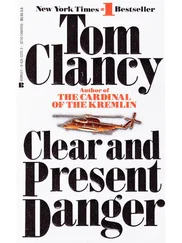

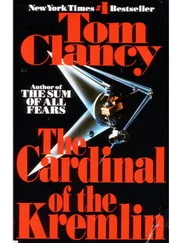


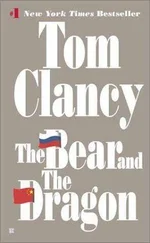
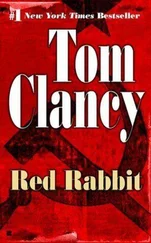


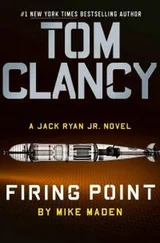
![Александр Ирвин - Tom Clancy’s The Division 2. Фальшивый рассвет [litres]](/books/417744/aleksandr-irvin-tom-clancy-s-the-division-2-falsh-thumb.webp)